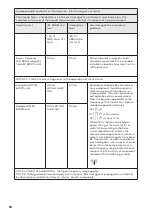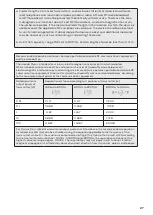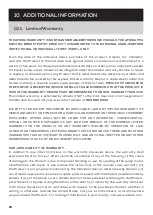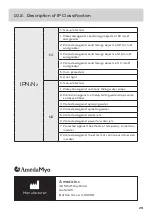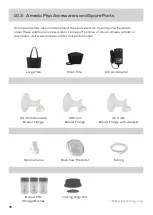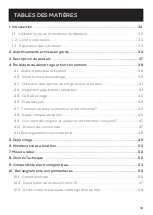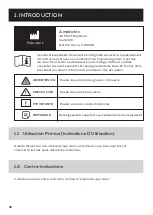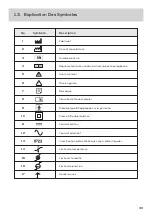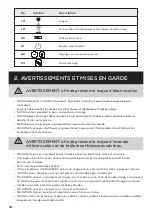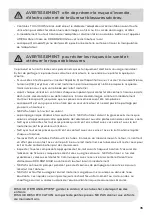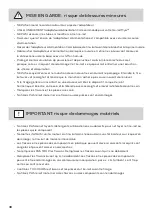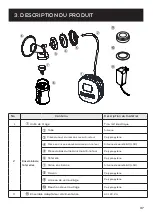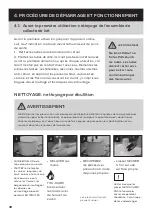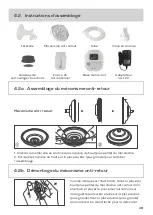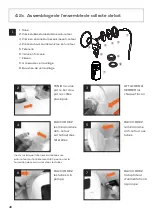
25
9. ELECTROMAGNETIC COMPATIBILITY
Guidelines and manufacturer’s declaration – electromagnetic emissions
The Ameda Mya is intended for use in the electromagnetic environment specified in the table below .
The customer or the user of the Ameda Mya should assure that it is used in such an environment.
Emission test
Compliance
Electromagnetic environment-guidance
RF emission - CISPR 11
Group 1
The Ameda Mya uses RF energy only for its internal
function. Therefore, its RF emissions are very low
and are not likely to cause any interference in near-
by electronic equipment
RF emission - CISPR 11
Group B
The Ameda Mya is suitable for use in all
establishments, including domestic establishments
and those directly connected to the public low-
voltage power supply network that supplies
buildings used for domestic purposes, provided the
following warning is heeded:
Warning: This equipment/system may cause radio
or may disrupt the operation of nearby equipment.
It may be necessary to take mitigation measures,
such as re-orienting or relocating the Ameda Mya or
shielding the location.
Harmonic emissions IEC
61000-3-2
Group A
Voltage Fluctuations/
flicker emissions IEC
610003-3-3
Compliance
Guidance and Manufacturer’s Declaration – Electromagnetic Immunity
The Ameda Mya is intended for use in the electromagnetic environment specified in the table below . The
customer or the user of the Ameda Mya should assure that it is used in such an environment.
Immunity test
IEC 60601
test level
Compliance
level
Electromagnetic environment - guidance
Electrostatic
discharge (ESD)
IEC 61000-4-2
± 6 kV
contact
± 8 kV air
± 6 kV contact
± 8 kV air
Floors should be wood, concrete or ceramic tile.
If the floors are covered with synthetic materials,
the relative humidity should be at least 30%
Electrical fast
transients IEC
61000-4-4
± 2 kV for
power supply
lines
± 1 kV for
input/output
lines
± 2 kV for power
supply lines
± 1 kV for input/
output lines
Mains power quality should be that of a typical
commercial or hospital environment
Surges IEC 6100-
4-5
± 1kV differ-
ential mode
± 2 kV com-
mon mode
± 1kV differential
mode
± 2 kV common
mode
Mains power quality should be that of a typical
commercial or hospital environment
Voltage dips, short
interruptions and
voltage variations
IEC 61000-1-11
< 5% UT
(>95% dip
in UT)
40% UT
(60% dip in
UT)
for 5 cycles, 6
cycles
70% UT
(30% dip in
UT)
for 25 cycles,
30 cycles
< 5% UT
(>95% dip in UT)
40% UT
(60% dip in UT)
for 5 cycles, 6
cycles
70% UT
(30% dip in UT)
for 25 cycles, 30
cycles
Mains power quality should be that of a typical
commercial or hospital environment. If the user
of the Ameda Mya requires continued operation
during power as interruptions, it is recommended
that the Ameda Mya be powered from an uninter-
ruptible power supply or battery.
















